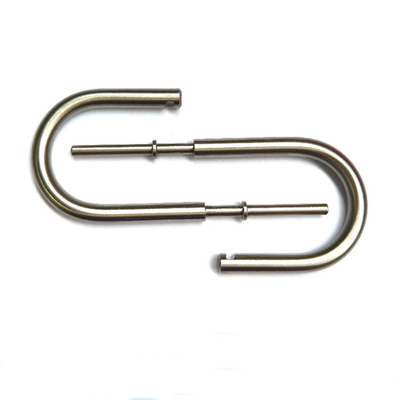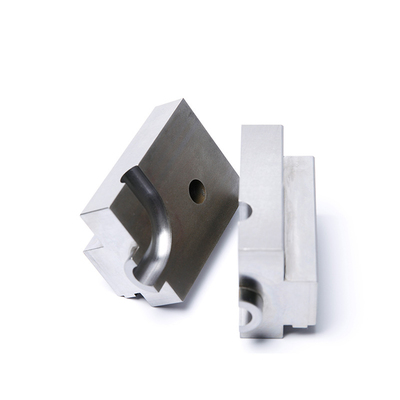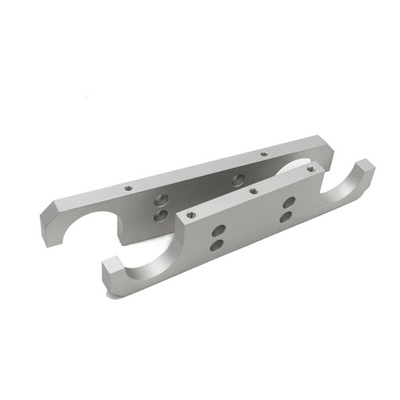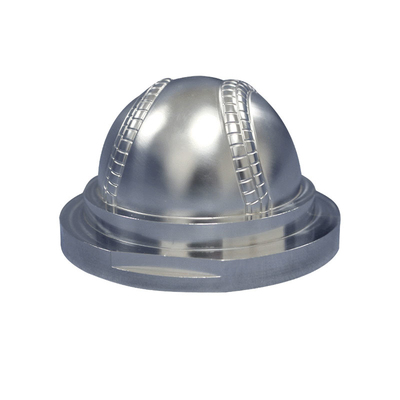3D printing subverts traditions. How can manufacturing companies deal with it calmly?
Some people believe that the fourth industrial revolution has arrived and will be followed by unprecedented changes and opportunities. As the core driving force of this revolution, digital technology is becoming faster and more economical, bringing tangible benefits that more people can see and touch. As emerging technologies such as artificial intelligence (AI), machine learning, generative design, and big data are accelerating the development of various industries, 3D printing technology is also gradually subverting traditional manufacturing.

The far-reaching impact of digital transformation is immeasurable, and this is understandable. But the Industry 4.0 era not only requires new technologies, but also new skills and new ways of thinking and working. For many companies, this change is no small thing, because it means injecting new investment, implementing organizational changes, and upgrading employee skills. In order to strengthen customer relationships and absorb new business, this change is necessary. Companies must make positive changes and embrace Industry 4.0.
Unlocking new possibilities requires a change in thinking
Take 3D printing as an example. 3D printing technology, that is, additive manufacturing technology, can build a complete functional part from scratch by continuously superimposing and bonding material layers without the need to build injection molds. The impact of this change on the manufacturing process and product form is huge. 3D printing has brought about an improvement in overall efficiency-not only shortens the design cycle, reduces the total production cost, but also shortens the time from production to delivery.
The impact does not stop there. 3D printing technology has also changed the way designers and manufacturers work, and the technology they use and the training they require are also completely different from the past. First of all, 3D printing technology can be said to have opened a brand new door for designers and engineers, allowing them to have sufficient freedom to give play to their creative inspiration and get rid of the limitations and constraints of the past.
Because there is no need to use injection molding molds, even if it is designed for mass production, designers no longer need to consider draft angles or seams. In short, they need to get rid of all the shackles that come from traditional manufacturing. In the era of Industry 4.0, new thinking models, design ideas and skills are needed, because additive manufacturing can allow designers to create more complex and even unprecedented new components, and sticking to traditional design thinking will gradually fall behind.
Second, unlike the linear workflow of traditional manufacturing, 3D printing requires designers and engineers to collaborate more closely at each node of the process. In the traditional manufacturing process, the interaction between the designer and the engineer is very limited. After the designer completes the product design, it is handed over to the engineer to carry out the prototype construction and testing work, and then the injection molding mold is constructed and mass-produced. However, this also means that functional considerations only appear in the second half of the development cycle, including material performance, structural integrity, and design durability.
The 3D printing ecosystem encourages the construction of a more integrated and interactive process. Designers must consider how a component is manufactured from the beginning of the design cycle. The new CAD technology (ie, computer-aided design technology) can already support the consideration of functional factors during the visual construction of the design, so engineers must also be involved in the early stages of the design.
New digital technology brings new opportunities
3D printing also brings opportunities for designers and manufacturers to learn and apply new technologies. The two innovative technologies of generative design and machine learning are the keys to this opportunity. With the popularization of digital manufacturing, CAD technology is constantly developing and updating. Today's CAD software can already be used in conjunction with virtual reality (VR) or augmented reality (AR) technology, allowing designers to superimpose any computer-generated image onto a real scene. Moreover, the operation of CAD software has become easier to understand, and some are even designed for non-professional programmers. These trends are pushing the popularization of manufacturing, giving everyone with design creativity the opportunity to become a manufacturer.
Automated generative design software can support designers to quickly view component designs, and generate multiple design arrangements based on data parameters such as selected materials, production methods, and cost constraints. Autodesk, a leader in engineering design, proposed that AI systems can automatically generate multiple high-performance product choices from a single design by applying generative design principles. This is of great benefit to designers, because they can draw inferences from one another and choose a design that best meets their important criteria from the hundreds of more design works generated by the AI system. In addition, the original 3D design file can also be directly connected to a 3D printer to calculate accurate material usage and quickly prototype construction to avoid waste.
How companies can help employees cope with changes more calmly
Faced with many new tools and new technologies to choose from, how to create a suitable working environment and employee support system is a key step for enterprises to transform into digital manufacturing. The first is to encourage engineers to be exposed to new technologies and actively experiment. These engineers have become accustomed to the traditional injection molding workflow and may find it challenging to learn new skills. But in the process of trying new tools and learning new skills, they will experience brand new design power. Exploring new features and discovering your own limitations will help inspire new ways of thinking.
When engineers try to become familiar with 3D printing technology, continuous training is essential. At HP, 30% of Indigo printer engineers have received Design for Additive Manufacturing (DFAM) training. From MIT to Nanyang Technological University, some world-renowned universities have also launched online courses and short-term classroom training to introduce the basic knowledge, applications and business significance of 3D printing to engineers in the middle of their careers.
HP also provides a lot of help to customers in digital transformation. In order to better understand the needs of customers and their current manufacturing methods, we start with the production line, look at the different components on the production line, and understand the application and standards of each component. In this way, we can identify parts that can be produced more optimized and faster with 3D printing technology, thereby minimizing costs or reducing the impact on the existing production cycle. In this way, we work with various companies to help them determine which parts of the manufacturing process can be replaced with 3D printing technology.
Prepare the next generation for digital manufacturing
As engineering and design become more and more inseparable, hybrid higher education courses will become more and more popular among the next generation of engineers. Universities such as Imperial College London and Pennsylvania State University have respectively begun to offer a comprehensive master's degree in design engineering and a master's degree in additive manufacturing and design engineering. HP-NTU Enterprise Lab launched by HP in October last year will also focus on the development of educational courses on additive manufacturing design, covering areas such as data management, security, user experience, and business models.
These courses combine design thinking, engineering knowledge and practice to provide graduates with the skills needed to promote the development of digital manufacturing. In just a few years, they will become the main force in accelerating and standardizing digital manufacturing.
The industry is evolving with each passing day. If manufacturers can adopt the right tools and technologies and motivate employees to explore creative solutions to meet business challenges, then we will have the opportunity to unlock countless new business opportunities.
Link to this article: 3D printing subverts traditions. How can manufacturing companies deal with it calmly?
Reprint Statement: If there are no special instructions, all articles on this site are original. Please indicate the source for reprinting:https://www.cncmachiningptj.com
 PTJ® provides a full range of Custom Precision cnc machining china services.ISO 9001:2015 &AS-9100 certified.
PTJ® provides a full range of Custom Precision cnc machining china services.ISO 9001:2015 &AS-9100 certified.
Machining shop specializing in fabrication services for construction and transportation industries. Capabilities include plasma and oxy-fuel cutting, Tailored machining, MIG and Custom Aluminum Cnc Precision Milling Welding Jig Fixture, roll forming, assembly, Lathe machining stainless steel cnc machine shaft, shearing, and CNC Swiss Machining services. Materials handled include carbon and Passivation Stainless Steel Machining Cover Plate Parts.
Tell us a little about your project’s budget and expected delivery time. We will strategize with you to provide the most cost-effective services to help you reach your target,You are welcome to contact us directly ( sales@pintejin.com ) .

- 5 Axis Machining
- Cnc Milling
- Cnc Turning
- Machining Industries
- Machining Process
- Surface Treatment
- Metal Machining
- Plastic Machining
- Powder Metallurgy Mold
- Die Casting
- Parts Gallery
- Auto Metal Parts
- Machinery Parts
- LED Heatsink
- Building Parts
- Mobile Parts
- Medical Parts
- Electronic Parts
- Tailored Machining
- Bicycle Parts
- Aluminum Machining
- Titanium Machining
- Stainless Steel Machining
- Copper Machining
- Brass Machining
- Super Alloy Machining
- Peek Machining
- UHMW Machining
- Unilate Machining
- PA6 Machining
- PPS Machining
- Teflon Machining
- Inconel Machining
- Tool Steel Machining
- More Material





